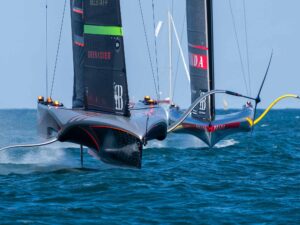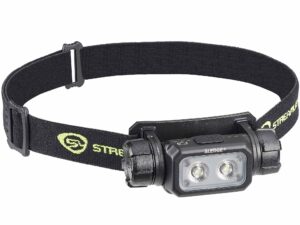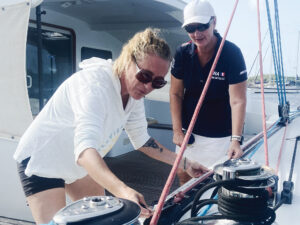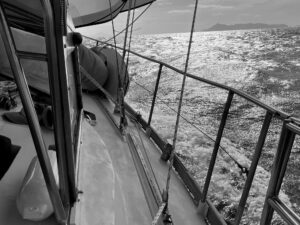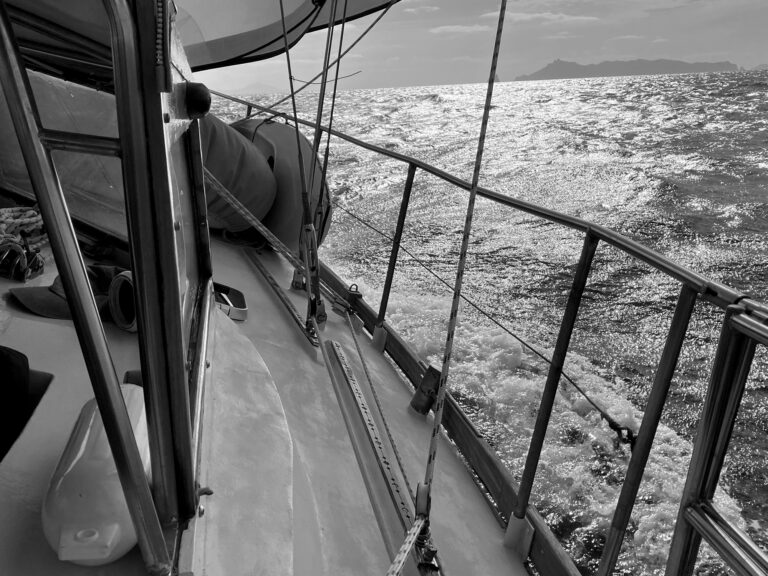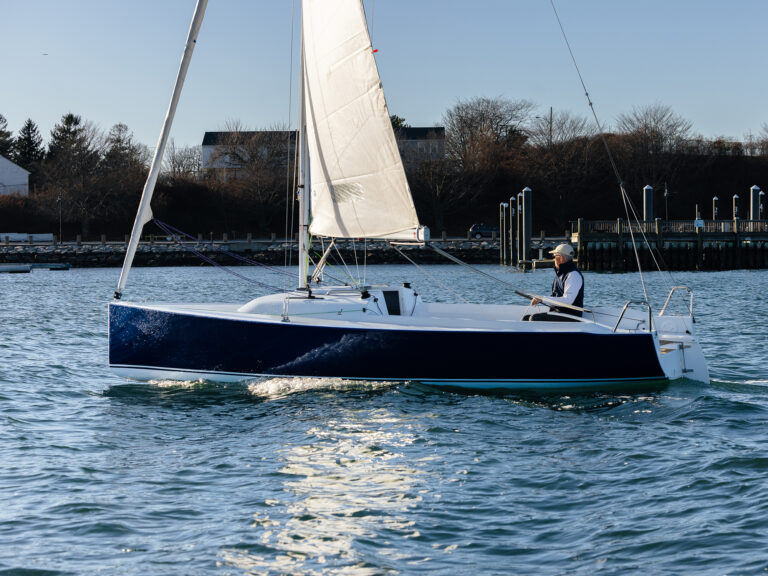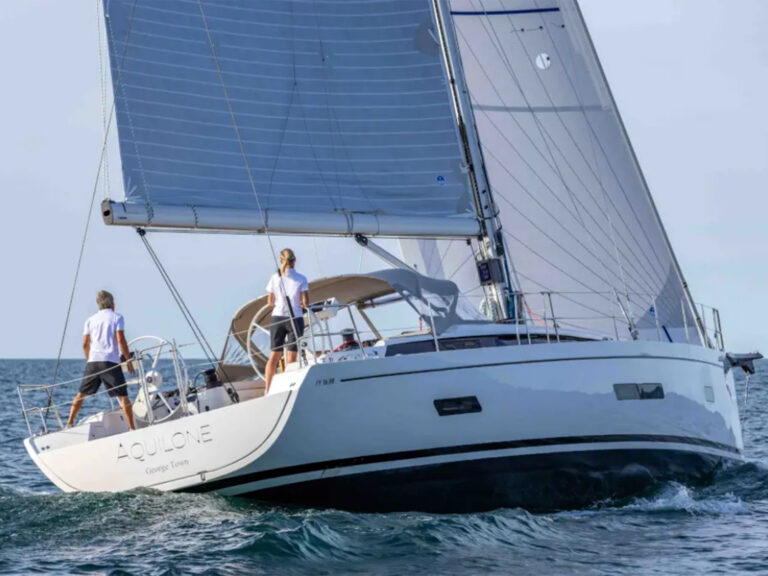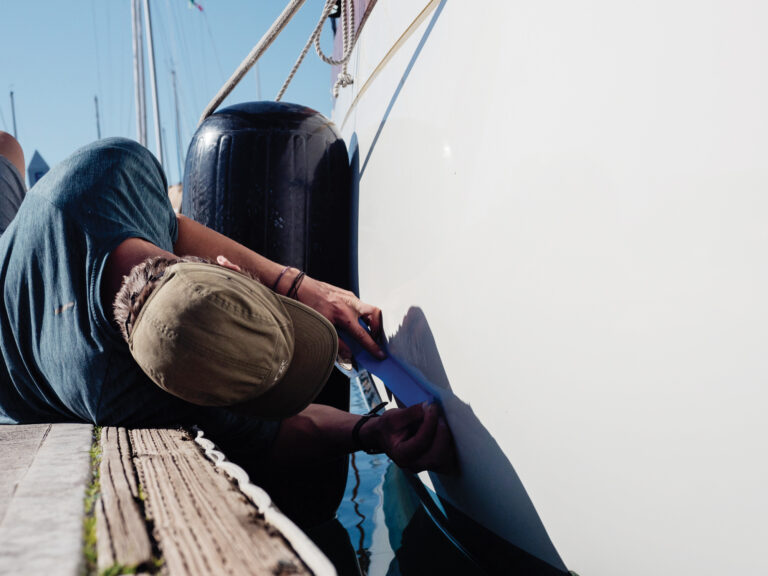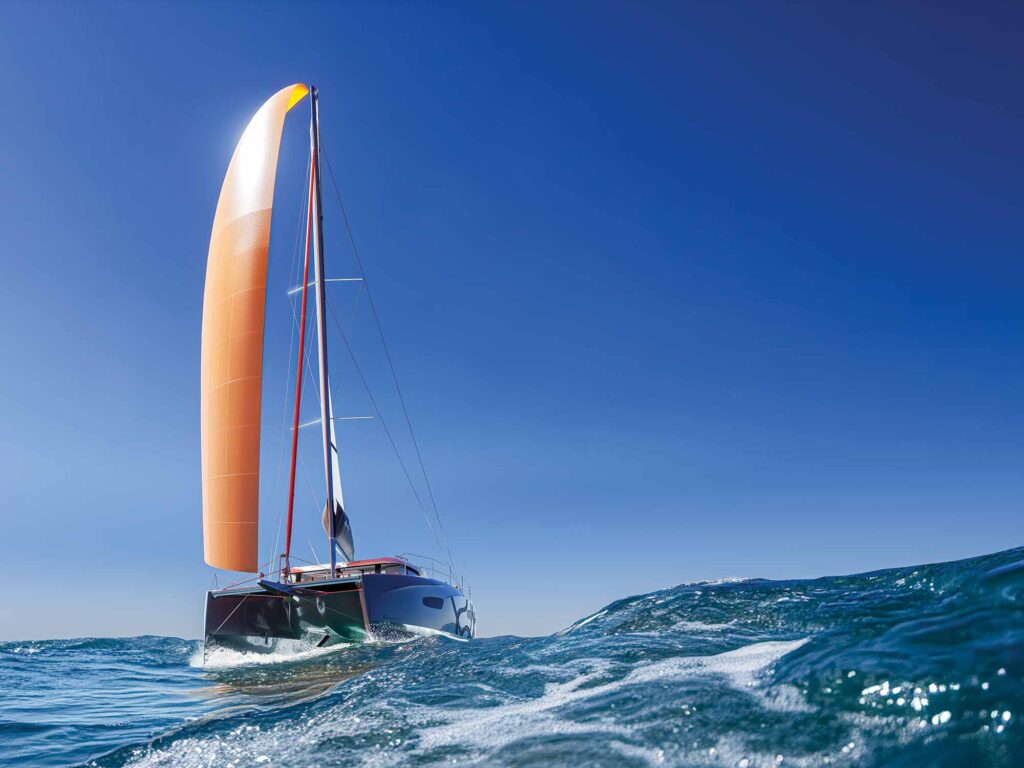
Boat-show season is back with a boom. After several years of supply-chain snarls and pandemic-related delays, boatbuilders have regrouped and come out swinging. This year’s lineup includes nimble pocket cruisers, carbon-powered speedsters, hybrid-electric bluewater explorers and floating living rooms with sails. There is something this year to excite every sailor.
What’s most striking is the blend of tradition and innovation: classic hull shapes reimagined with carbon composites, refined rigs paired with hybrid propulsion systems, and interiors that revolutionize life aboard both underway and at anchor.
As you scroll through this preview, picture yourself walking the docks, running your hand over a flawless epoxy finish, marveling at the hidden strength of a carbon mast, or sinking into a cockpit designed for comfort on long days at sea. Many of these models will be making their North American debuts at the fall and spring U.S. boat shows, giving enthusiasts a first chance to see them in person. With this year’s offerings, the opportunity to make dreams reality and time on the water better spent has never been more accessible.
Small but Mighty: Pocket Cruisers with Big Ambitions
Not every great sail demands a long hull. Some of this year’s standout designs prove that serious capability and comfort can come in compact packages.
Take Artisan Boatworks’ Ha’Penny 20, a 20-footer designed by Tom MacNaughton with global voyaging in mind. Eschewing the traditional open cockpit, the Ha’penny has a pilothouse with 6-foot-6 -inch headroom, a rarity in such a small craft. The lightweight, sturdy hull is constructed from strip-planked Alaskan cedar. It carries a single junk rig on a carbon mast, a setup known for simplicity, durability and ease of reefing. Intended for solo sailors or couples dreaming of far horizons, the Ha’penny blends classic aesthetics with modern materials and thoughtful design.
The Sirius 35 DS also punches well above its size. Debuting stateside this year, this deck saloon yacht brings a split-level layout for comfort and natural light. Available in two-, four- or six-berth versions, it has 360-degree panoramic views and multiple keel options for everything from shoal cruising to offshore passages. The helm area is set up to be suitable for coastal exploration or open-water adventure.
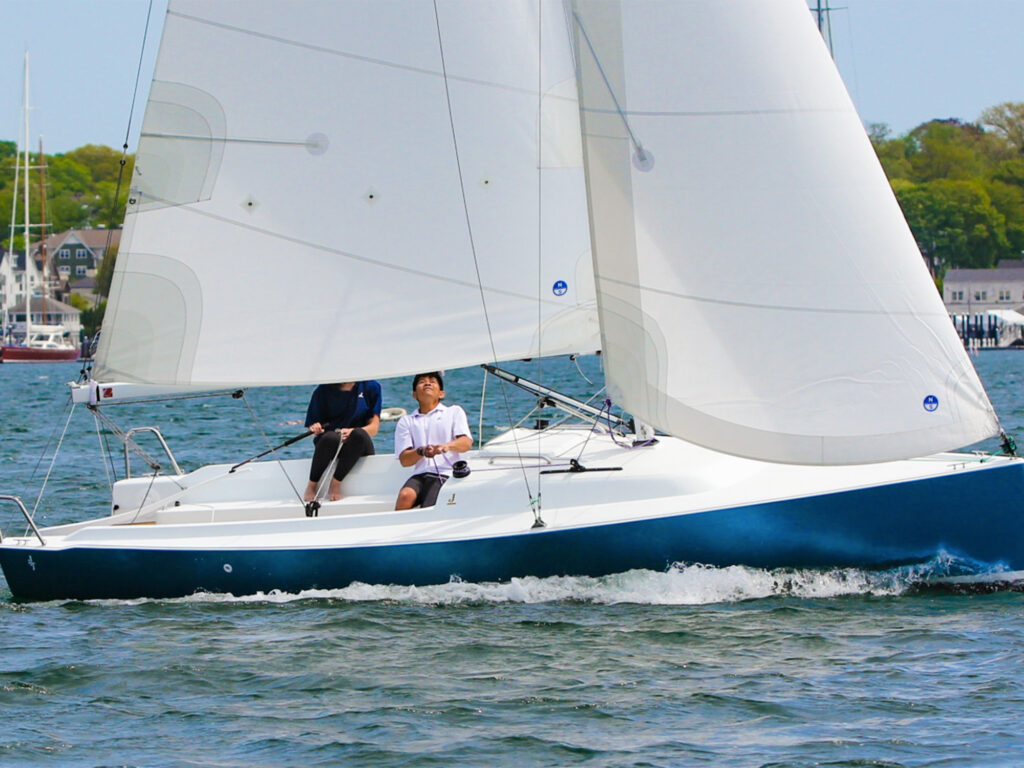
J/Boats’ J/7 brings the fun and performance of the company’s signature line to a modern 23-foot daysailer. Trailerable behind a midsize SUV, this boat seats five people in its cockpit. Stability comes from a fixed keel and a balanced hull design, while simple sail controls and a walk-through transom make for easy day sailing or casual weekend racing. It’s a boat built for families and beginners without sacrificing the crisp handling that J/Boats fans expect.
The Speed Set: Blurring Lines Between Racer and Cruiser
Performance remains a compelling draw in sailboat design, and this year offers a range of models that combine speed with liveaboard comfort.
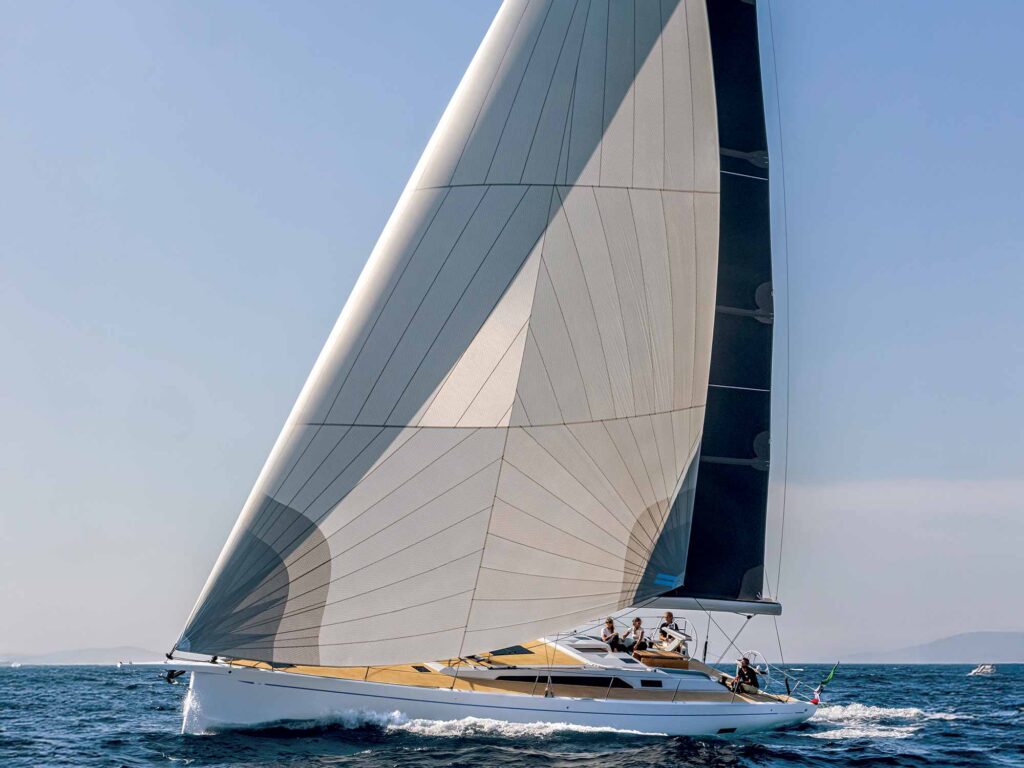
At the top end is the Grand Soleil 52 Performance, with a 55-foot hull redesigned by Matteo Polli, and with interiors by Nauta Design. Offered in Performance and Race variants, it balances a powerful sail plan with stability-enhancing hull forms. Three staterooms and spacious living areas mean owners can push hard on passage but still unwind in style when anchored.
The Pegasus 50 is built for serious offshore cruising with a carbon-reinforced composite structure and watertight compartments. Its deep cockpit and modern hull lines help maintain stability and comfort, while 360-degree salon views and open-plan interiors provide a sanctuary for extended cruises. The versatile rig and composite build make this boat equally at home in club races or transoceanic runs.
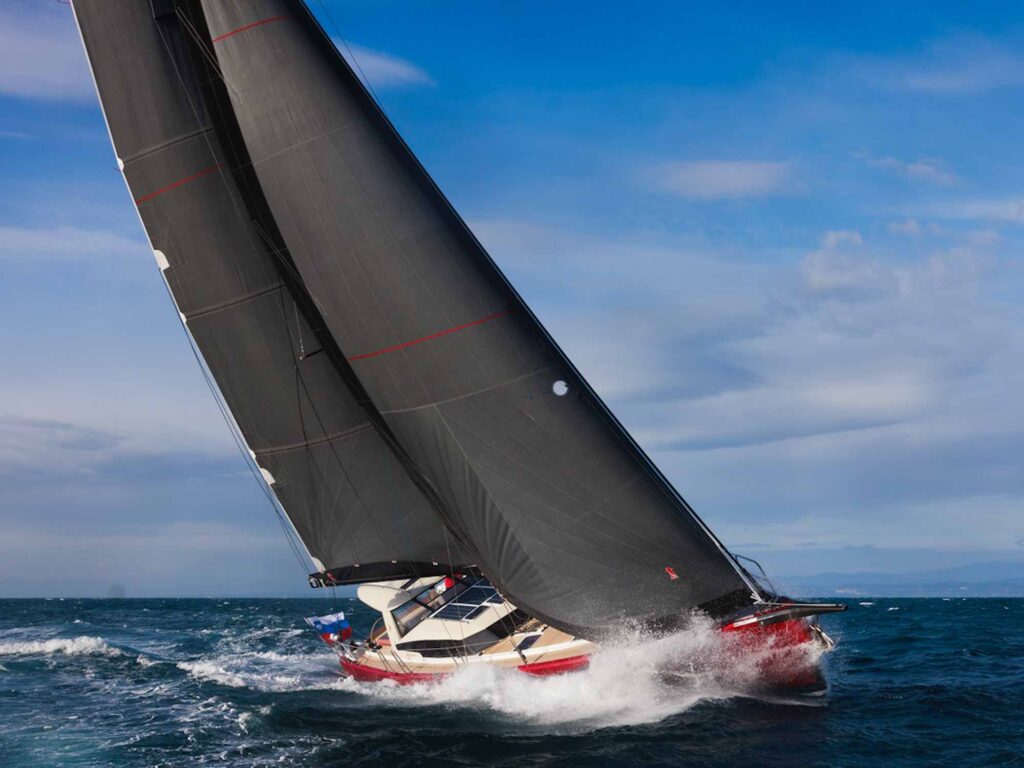
On the multihull front, Quorning Boats’ Dragonfly 36 trimaran is blends speed and versatility. The Swing Wing system folds the beam from 26.5 feet to about 12 feet for marina docking. Wave-piercing floats minimize drag, while twin helms and electric winches ease handling. Belowdecks, two private staterooms and a galley create a surprisingly spacious environment for cruising.
Beneteau revives its classic First 30 with a bold new vision: the “planing cruiser.” Designed in collaboration with Seascape, this 30-foot sailboat planes easily, offers simple handling, and suits both shorthanded crews and family cruising. The uncluttered cockpit, low-load rig, and accessible controls make sailing effortless at double-digit speeds. Inside, 6-foot headroom, two staterooms, a functional galley, and sustainable cork flooring create comfort without compromise. Optional Premium Pack upgrades include high-end upholstery, mood lighting, and magnetic doors. With versatile deck layouts for day sailing or racing, the First 30 aims to redefine small-boat fun and performance.
The Excess 13 strips catamaran cruising down to its essentials with asymmetrical hulls and a carbon-infused structure for stiffness without excess weight. At 42 feet, 7 inches long, it’s a nimble and lively platform with an airy salon and cockpit that invite socializing while offering dedicated hulls for privacy.
Carbon fiber and epoxy resin technology, once reserved for racers, are filtering down to accessible bluewater designs.
Two leading-edge performance cats come from Balance, which raises the bar with the Balance 502 and 580. The 502 replaces the 482 with a vacuum-bagged carbon substructure, high-aspect daggerboards and 1,544 square feet of sail area. The VersaDrive hybrid propulsion system reportedly cuts fuel consumption by 25 percent, charges batteries quickly and integrates solar panels for sustainable power management. The 580 is a carbon-reinforced, all-epoxy performance cruiser designed for speed and seakindliness. Its dual daggerboards, cutter rig and VersaHelm steering system let solo or shorthanded crews take full command. Panoramic windows flood the open-plan cockpit and salon with light, blending luxury with offshore capability.
Hybrid Horizons: The Electric and Hybrid Revolution
Sustainability is no longer an afterthought. It’s integral to modern cruising designs, with hybrid and electric propulsion coming to serious offshore-capable platforms.
Robertson and Caine’s Leopard 52 Hybrid combines upgraded sailing performance—including a lengthened rig and 17 percent more upwind sail area—with 1.6 kW of integrated solar power and an optional hydro-generating hybrid drive that recovers energy under sail. Panoramic views, multiple stateroom layouts and an ergonomic helm design help this modern cruiser to blend speed, comfort and performance.
Some of this year’s standout designs prove that serious capability and comfort can come in compact packages.
The Island Spirit 525e takes things further as a fully electric 52-foot catamaran. Powered by high-efficiency lithium batteries and integrated solar panels, it offers silent, zero-emission cruising with more than 100 nautical miles of electric-only range and up to 1,800 miles in hybrid mode at 6 knots. At under 18 tons, it balances strong sailing performance with quiet anchoring and reduced maintenance.
Xquisite’s 54 E-Plus blends hybrid propulsion with a 60 kWh lithium battery bank and 4.75 kW of solar panels. A furling mainsail, a hardtop helm with weather protection, semi-flush deck hatches, and a retractable swim ladder add to this boat’s style and efficiency. Its black painted rig and North Sails laminate sails complete the style.
Royal Cape’s Majestic 530 Hybrid can be spec’d with as many as six ensuite staterooms. This boat has ocean-crossing capabilities, supported by 6.4 kW of solar, lithium storage and a high-output watermaker. Safety is inherent to the boat’s design, with wide walkways and solid rails, while twin 110 hp Yanmars and a full sail plan ensure power and reliability for extended cruising.
The St Francis 460 Hybrid is a resin-infused, foam-core cruising catamaran built for bluewater liveaboard life. Its three- and four-stateroom layouts include protected helm stations and open salon-cockpit flow. Yanmar diesels, Sparcraft rigs, North Sails, lithium batteries, Victron power management, Spectra watermakers and full AC systems make this boat ready for serious offshore work.
HH Catamarans’ HH52 evolves the builder’s award-winning HH50, while also adding electrification options. Built in carbon with a tall rig and daggerboards, she balances speed with comfort and eco-conscious hybrid systems. Hybrid power, regenerative sailing capabilities and a wide-open cockpit make this a catamaran designed for long, sustainable passages.
Comfort Kings: Bluewater Cruising with Luxury and Practicality
Long-term liveaboards and bluewater cruisers demand a level of comfort and practicality that few boats master, but this year’s crop hits the mark with impressive consistency.
The Contest 50CS blends ocean-ready lines with superyacht-inspired interiors. An advanced hull shape adds stability and speed with low heel angles, while twin helm stations and simplified sail handling are designed to make the boat safe and easy to manage. Inside, a master stateroom aft, a VIP stateroom forward and an optional third stateroom create flexible, voluminous living spaces.
American builder Island Packet’s 42 Motor Sailer has a full-keel fiberglass hull, Solent rig, and enclosed helm that’s intended for all-weather cruising. Powered by a 110-hp Yanmar and carrying up to 320 gallons of fuel, she has serious range for long passages. The deck-level salon opens aft to a cockpit for socializing or relaxing.
A pair of Beneteau models, the Oceanis 47 and 52, reflect the brand’s eighth generation of cruising DNA. The 47 leans toward nimble coastal sailing with a spacious cockpit, while the 52 emphasizes bluewater comfort and range. Both models have refined interiors and optional “First Line” performance rigs that bring the regatta spirit to cruising.
Dufour’s 48 and 54 expand on Umberto Felci’s modern, efficient hull designs. The 48 has a sun-drenched forward lounge and nimble handling, while the 54 has a sky-high cockpit, multiple sunbathing zones, and layouts ranging from private escapes to six-stateroom social hubs. Whether owners want to chase trade winds or fjords, the 48 and 54 combine seaworthy muscle and onboard comfort.
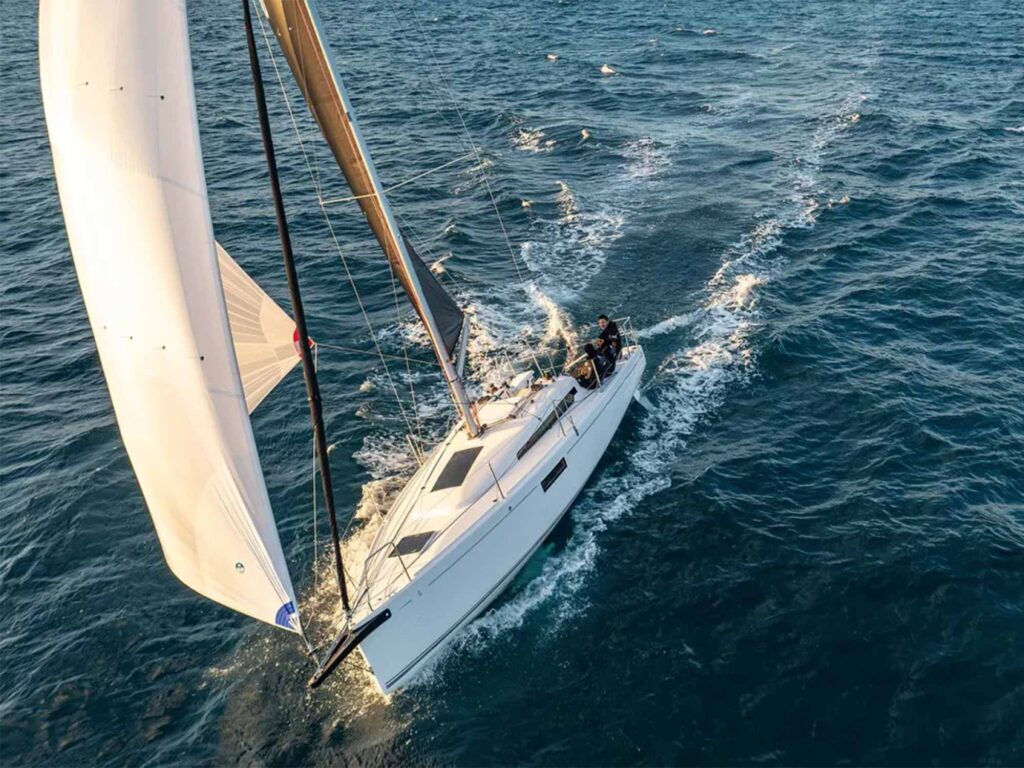
On the cat side, Lagoon’s 38 and 60 cover a broad spectrum of cruising needs. The 38 has extended transoms for safe water access and a cockpit/salon for entertaining as many as 10 guests, while the flagship 60 has aft and forward cockpits, a roomy flybridge and as many as 14 berths with more than 2,500 square feet of sail area. Both have proven cruising capabilities wrapped in bright, modern styling.
Voyage’s 510 is a luxury cruising catamaran with performance bones that is built for durability and comfort. This boat can be spec’d with as many as four ensuite staterooms and quarters for two crew. Twin 57 hp diesels, and substantial fuel and water tankage allow for serious offshore voyaging. The centralized helm station and open living spaces, including the flybridge, make her ideal for cruising and entertaining.
The Bali 5.2 continues the brand’s focus on inside-outside living with three- to six-stateroom layouts and customization options. Bali’s hallmark up-and-over door opens the salon to the cockpit, treating the interior to loads of natural light and ventilation. The hydraulic platform aft doubles as a swim deck and tender garage.
Light, Bright and Social: Open Living and Seamless Flow
Modern cruisers increasingly value spacious, light-filled interiors that erase the line between indoors and out. Several new designs push this trend forward with clever use of glazing, layouts and materials.
Fountaine Pajot’s 41 and 44 blend sexy French design with cruising autonomy. The 41 has bright, open interiors and smart deck layouts, while the 44 ups the ante with more space, a significant solar array and an optional full-beam owner’s stateroom. Both models balance performance with comfort and sustainability.
The Jeanneau Sun Odyssey 415 has an inverted bow and continuous hull chine that are designed to improve hydrodynamics and stability. Twin rudders with self-aligning bearings help to provide precise helm feel. Belowdecks, an L-shape galley and forward-facing chart table optimize workflow, and sizable hull windows let natural light pour into the salon.
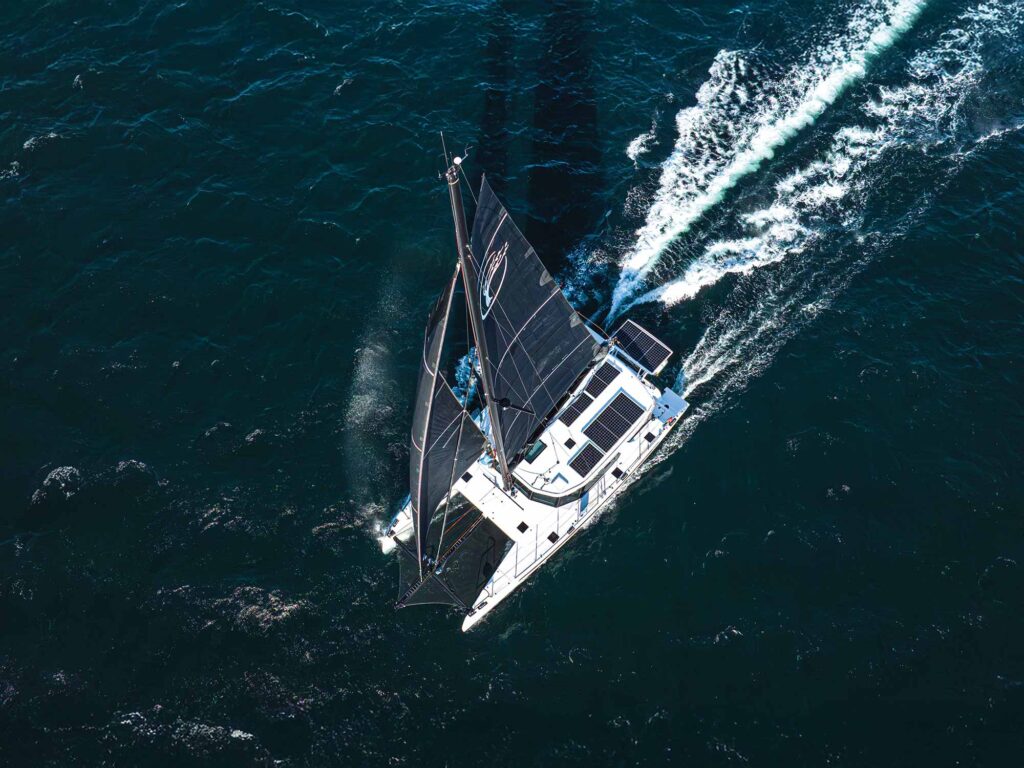
Windelo’s 51 and 55 Sport are significant updates to previous models, with sharper bows, longer waterlines and carbon/Kevlar construction. Oversized carbon rigs and 3D membrane sails deliver a touted 10-percent speed improvement, while racing deck hardware and Dyneema lashings add some muscle. Inside, these boats are known for airy, social interiors primed for comfortable cruising or spirited daysailing.
The big picture: From pocket rockets to ocean-crossing flagships, this year’s new boats pack more speed, smarts and sustainability into every hull. For sailors, that means more ways than ever to match the right boat to the adventures ahead.

